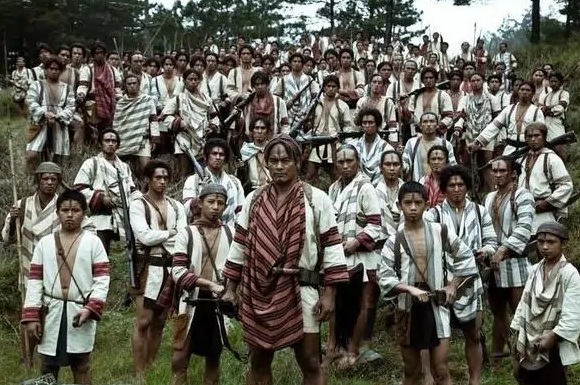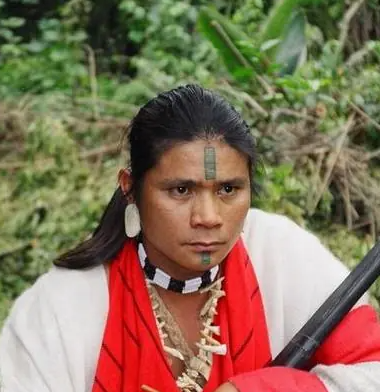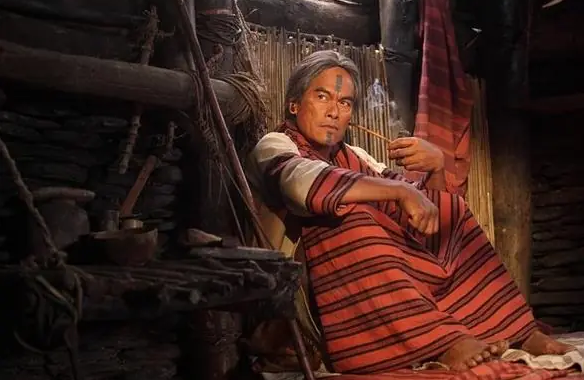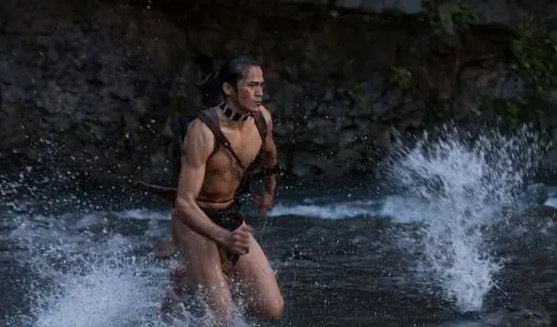
- English name:Warriors of the Rainbow: Seediq Bale
- Broadcast time:May 10, 2012
- Starring:林庆台(Lin Chingtai)、马志翔、温岚、 安藤政信、河原萨布、 徐诣帆、罗美玲
- director:魏德圣(Wei Te-Shen)
Introduction
Today, I will introduce a Chinese film which called Seediq Bale (赛德克巴莱sài dé kè bā lái). So let us have a brief introduction.
Seediq Bale is a 2011 Taiwanese historical drama epic film directed by Wei Te-Sheng (魏德圣Wèi Déshèng) and produced by John Woo (吴宇森Wú Yǔsēn), based on Wushe (雾社wù shè) Incident in central Taiwan in 1930.
The film is divided into two parts – the full versions in Taiwan, the part 1 is called The Flag of Sun (太阳旗tàiyáng qí), and the part 2 is called The Bridge of Rainbow (彩虹桥cǎihóng qiáo), both running at a total of up to four and half hours.
This film is the most expensive production in Taiwanese cinema history. The film has also been compared to the 1995 film Braveheart by Mel Gibson and The Last of the Mohicans by the media in Taiwan.
This is a very fabulous film.

Plot
The first part is named after the symbol of Japan, the “Rising Sun Flag”. It starts from the Japanese occupation of Taiwan in 1895 and ends with the Wushe Incident in 1930. It focuses on the description of the Wushe Public School Incident before and after it broke out.
In 1930, Prince Kitashirakawa was killed, and the Taiwan Shrine Festival was held. The Wushe area held a joint sports meeting as usual. [2] When the joint sports meeting opened and all the Japanese, police and their families gathered at the public school, the Seediq Wushe group’s Mahepo, Hego, Boyaren, Sku, Rodolfo, and Tarowan tribes, led by the Wushe group’s Mahepo tribe leader Mona Rudao, launched an attack.

On the morning of that day, the Wushe Public School (now the Wushe branch of Taipower Wan Da Power Plant) held a sports meeting. The opening ceremony was presided over by Keita Ogasa, the governor of Nogao County. Other Japanese came to watch the ceremony. At this time, the Seediq warriors who had ambushed in advance immediately launched a fierce raid under Mona Rudao’s attack order. In a chaotic battle without warning, they knocked down and killed 134 Japanese in the stadium one by one.
On the other hand, Mona Rudao ordered his second son Baso Mona to sneak into the Mahepo Mountain material collection area and attack the Japanese police. He also ordered his eldest son Tado Mona to sneak into the Mahepo Police Station and shot all the Japanese police and their families. Later, they were divided into several teams, cut off all the Japanese telephone lines to the outside world, and successively attacked the police stations of various tribes, seizing ammunition and firearms. This was used to announce to the tribes in the Wushe area that the holy war against violent rule had begun, and they all responded in droves.
In shock and anger, the Japanese army immediately dispatched infantry and police stationed in Taichung and Hualien to advance towards Wushe in two directions; Mona Rudao led his people to fight against the enemy and retreated to the Mahepo Grottoes. A war between different races, in which the two sides fought for resources and revenge, and for the dignity of ancestors and souls, began.
Next episode: Rainbow Bridge
The next episode “Rainbow Bridge” further describes the invasion of the Japanese army and the bloody resistance led by Mona Rudao. It also deeply depicts the story of the tribesmen returning to their ancestors after their calm sacrifice across the Rainbow Bridge.
Continuing from the previous episode, the Seediq people launched a public school conflict, which caused the Japanese to encounter the biggest ruling crisis since the colonial occupation. Japanese Army Major General Yahiko Kamata was ordered to mobilize more than 3,000 military and police officers, armed with superior forces such as mountain artillery and machine guns, to jointly go to Wushe to attack.
On the other hand, the patrolman Kojima Genji, who was friendly to the tribe, lost his mind completely due to the death of his wife and children on the sports field. He was so angry and painful that he forced the enemy of Mona Rudao, the leader of the Tunbala tribe, Temu Walis, to send troops to assist the Japanese in fighting this mountain guerrilla war, which they were not good at.

However, the Seediq people, who had lived in the mountains for generations, were familiar with the local cliffs, which led to the Japanese reinforcements being unable to capture the area for a long time and causing countless casualties. Seeing that the suppression was ineffective, the Japanese army sent planes to drop poison gas bombs, resulting in a situation where the indigenous people used primitive weapons such as hunting rifles, hatchets, and wooden sticks to fight against planes and artillery. After nearly a month of fierce confrontation, the anti-Japanese tribes suffered heavy casualties; in order to relieve their children and husbands from worries, the Seediq women hanged themselves first; the remaining men tattooed the Seediq mark on their faces, vowing to resist to the death and never surrender.
Yahiko Kamata, who had vowed to take Wushe in one day, had to admire Mona Rudao’s bravery and sighed: “Three hundred warriors resisted thousands of troops, either died in battle or committed suicide! Why do I see the samurai spirit that has disappeared for a hundred years in this remote mountainous area of Taiwan? Is it because the cherry blossoms here are too red?”
For the freedom of their souls, the Seediq people and warriors who were not afraid of sacrifice and death in battle, crossed the rainbow bridge and began their journey to return to their ancestors.













